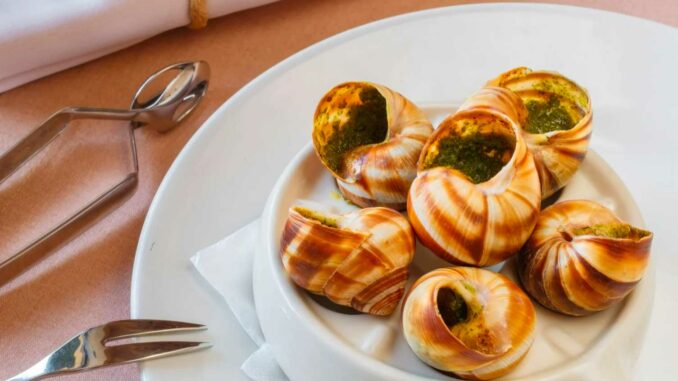
From foie gras to tartiflette, discover France’s emblematic dishes, their regional roots, and how they fit into French gastronomy today—plus tips for tasting and learning.
French cooking is less a single canon than a mosaic, where climate, history, and trade lanes shaped what we eat and how we eat it. This tour of classics—some medieval, others modern—traces the country through its plates: foie gras and Basque piperade in the southwest; escargots and boeuf bourguignon in Burgundy; choucroute in Alsace; buckwheat galettes in Brittany; carbonnade in the North; and tartiflette in the Alps. Along the way come the daily rituals that define French food culture: the baguette under the arm, a croissant at breakfast, a brasserie’s croque-monsieur, a platter of bulots by the sea. For travelers or cooks, these stories illuminate French cuisine today—and where to find cooking classes in France that bring tradition to life.
How France Eats: Products, Techniques, Rituals
What binds the nation’s table is less a list of recipes than a shared method: seasonal shopping, precise cooking, and respect for provenance. Techniques are designed to let good ingredients speak—slow braises to coax gelatin-rich sauces; careful reductions instead of heavy thickeners; and garnishes used for contrast, not clutter. In practice, French cooking takes a thousand forms. A winter stew in Flanders leans on beer; in Burgundy, wine and lardons. Brittany’s skillet hisses with buckwheat; Provence cooks with olive oil and tomatoes. The bread basket, however, is a unifier: a crackle-crusted baguette that has become a daily ceremony as much as a food. The pastries and desserts that follow—tarts flipped caramel-side up or custards seared to amber glass—show a country that treats texture as seriously as taste. This is the DNA of French gastronomy: disciplined technique, honest produce, and regional specificity.
Regional Classics You Should Know
Southwest and the Basque note
Foie gras is a festive shorthand for the French table, served seared with fruit or cold in torchon, often on brioche with onion jam or fig compote. Its backstory reaches deep into antiquity, when farmers learned to fatten geese and prized the resulting richness. In the Basque Country, poultry and peppers set the tone. The signature piperade—soft peppers, onions, tomatoes, and the indispensable Espelette pepper—can be folded with eggs or used as a sauce for chicken, a dish many know as poulet basquaise. Bayonne ham, protected by PGI, offers a salty-sweet counterpoint. For anyone mapping regional specialties, this corner of the southwest is a study in balance: fat and fire, cured and fresh. Taste it in restaurants, or better, learn it—there are excellent cooking classes in France that teach piperade’s gentle braise and foie gras’s careful handling while explaining labels that safeguard the terroir of Basque cuisine.
Burgundy and Alsace: from escargots to choucroute
Burgundy’s escargots à la bourguignonne—snails baked with parsley, garlic, and butter—turn a modest ingredient into a ritual. So does boeuf bourguignon, a stew built on wine, aromatics, and patient heat until the meat yields and the sauce gleams. Across the Vosges in Alsace, choucroute garnie tells a different story: sauerkraut gently cooked with juniper and served with a chorus of sausages and salted meats, sometimes with potatoes. The wine is Riesling, the mood convivial, the method precise. Together these plates express two voices within French cuisine: one shaped by vineyards and rich stocks, the other by preservation, smoke, and spice—both demanding attention to seasoning and timing. For travelers, these dishes are also a shortcut to the landscape: forests and vines in Burgundy, timbered villages and brassériers’ platters in Alsace.
Brittany and the West: buckwheat skill and sweet finale
Brittany’s galette—thin, lacy, and made from sarrasin (buckwheat)—is the savory sibling of the crepe. Traditionally filled with ham, grated cheese, and an egg, it also welcomes onions or andouille. Its appeal is partly architectural: a crisp edge, a tender center, the yolk ready to run. Socca in Nice or panisse in Marseille echo the same logic with chickpea, proving how regional flours power French cooking without wheat. For dessert, think simple and exacting: a dark chocolate cake with barely set center, or a tart glazed to mirror-finish. In Breton crêperies—and in serious kitchens—technique and restraint keep sweetness in check, honoring the grain’s bite and butter’s perfume. For cooks, mastering the batter and the bilig (griddle) is an ideal entry point to French gastronomy: deceptively simple, endlessly refined.
North and Flanders: beer in the pot
In the North, beer steps into wine’s place. Carbonnade flamande slow-cooks beef with brown ale and onions until deep and silky, often finished with a swipe of mustard or a slice of spice bread to enrich the sauce. The dish is sweet-salty, with hops adding a dried-flower lift. Pair it with frites or mash; add a sharp pickle; and you have a working definition of northern comfort. The point is not just flavor but method: low, steady heat; accurate seasoning; and the right beer for balance. For anyone studying French food culture, carbonnade explains how borders blur in the pot while still producing an unmistakably regional plate. It also shows how home kitchens and bistro stoves keep culinary memory alive.
Alps and the modern tradition: tartiflette and beyond
Tartiflette—potatoes, onions, lardons, and reblochon baked until bubbling—feels timeless but is, in fact, a relatively recent Alpine classic that surged in popularity with ski culture. It is no less beloved for that. The logic is impeccable: high-flavor cheese, humble potatoes, and a dish meant for cold air and big appetites. Its buckwheat cousin, croziflette, swaps in tiny Savoyard pasta (crozets) for potatoes. Both plates illustrate an important truth about French gastronomy: tradition is a living thing, and new dishes can be welcomed alongside centuries-old standards when they respect local produce and technique.
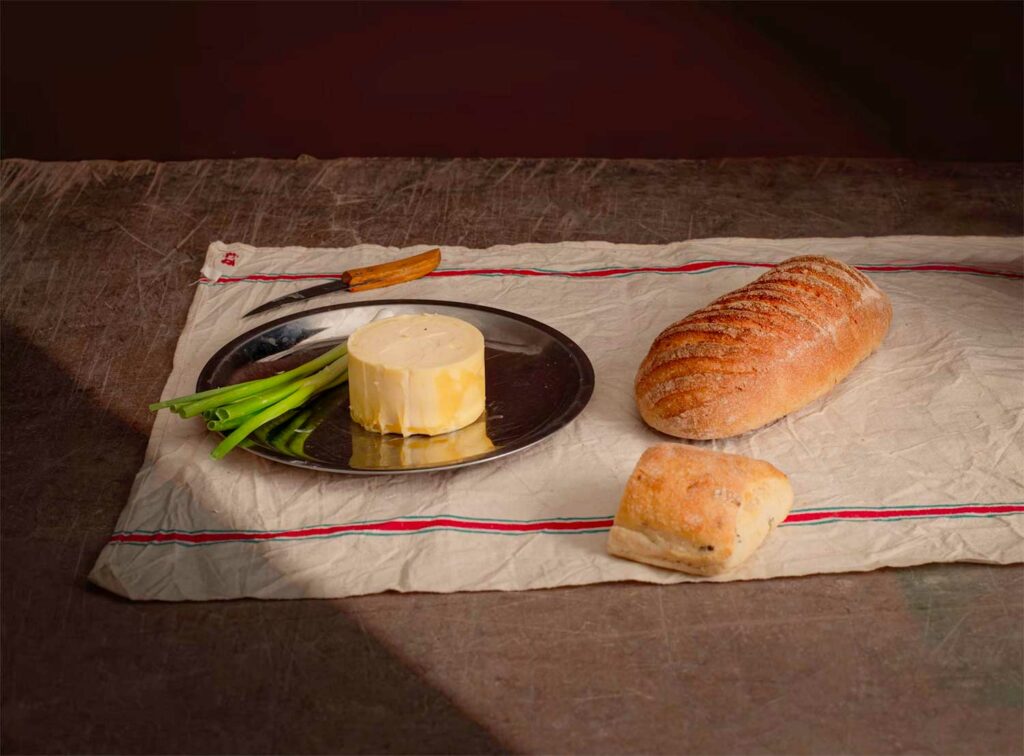
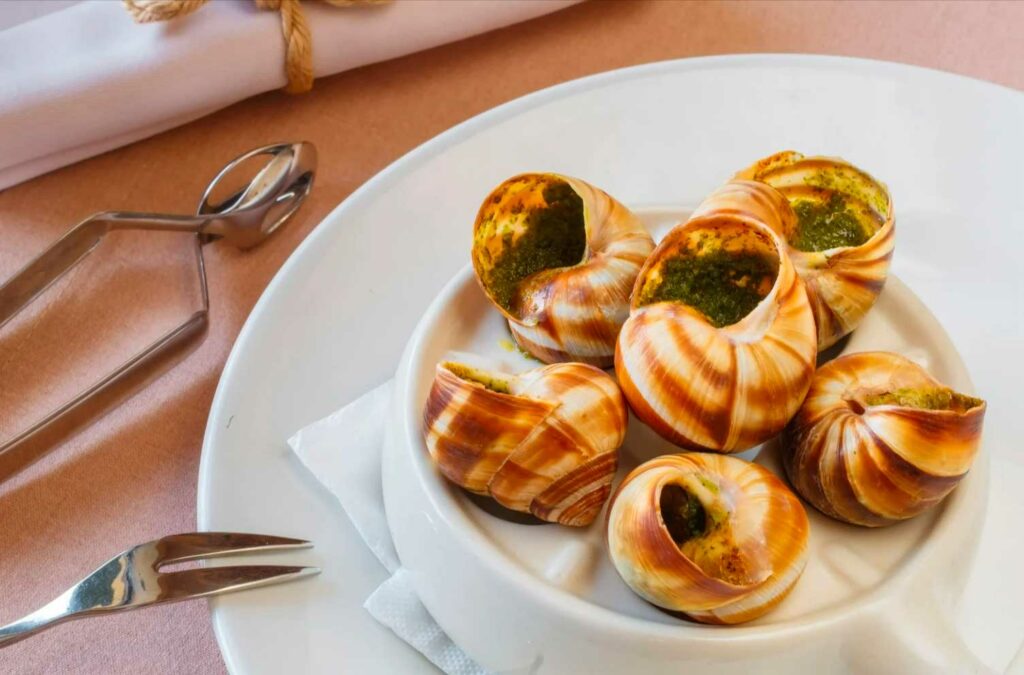
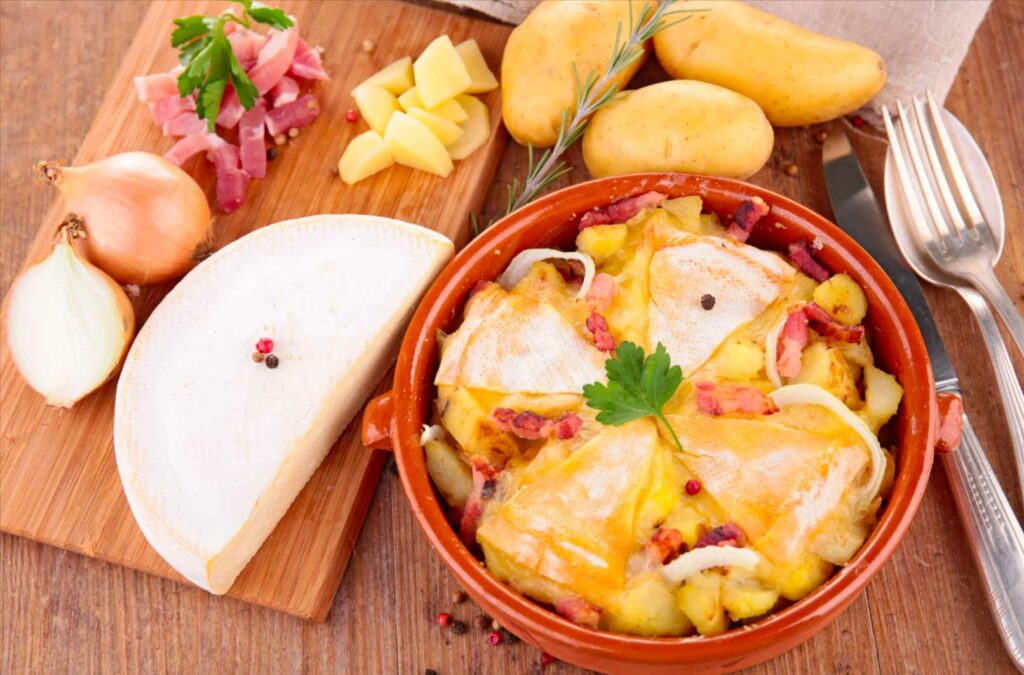
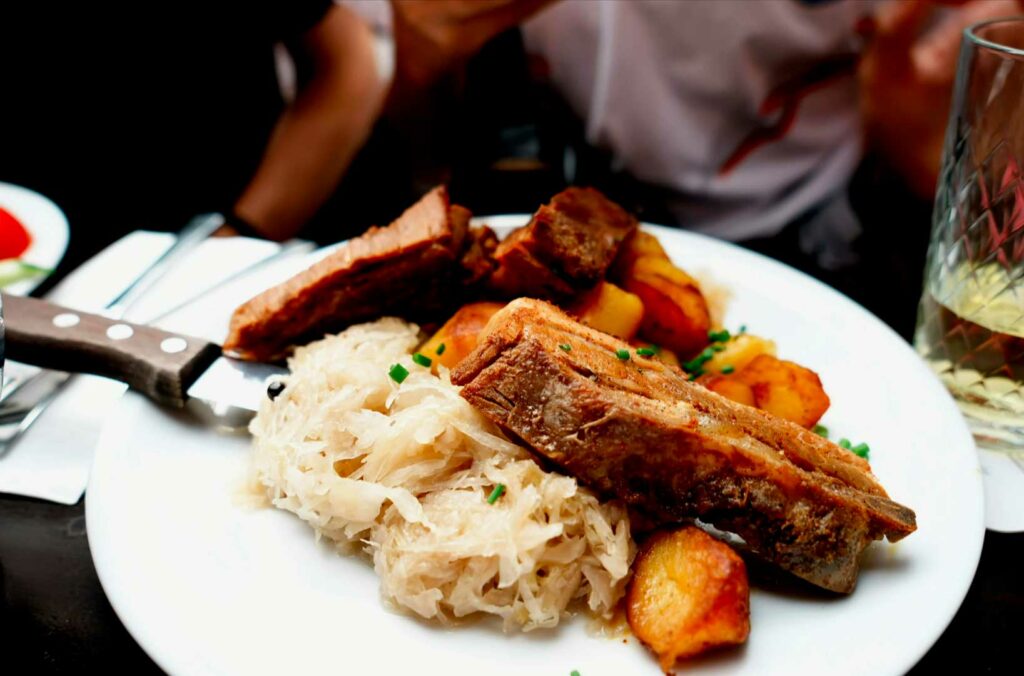
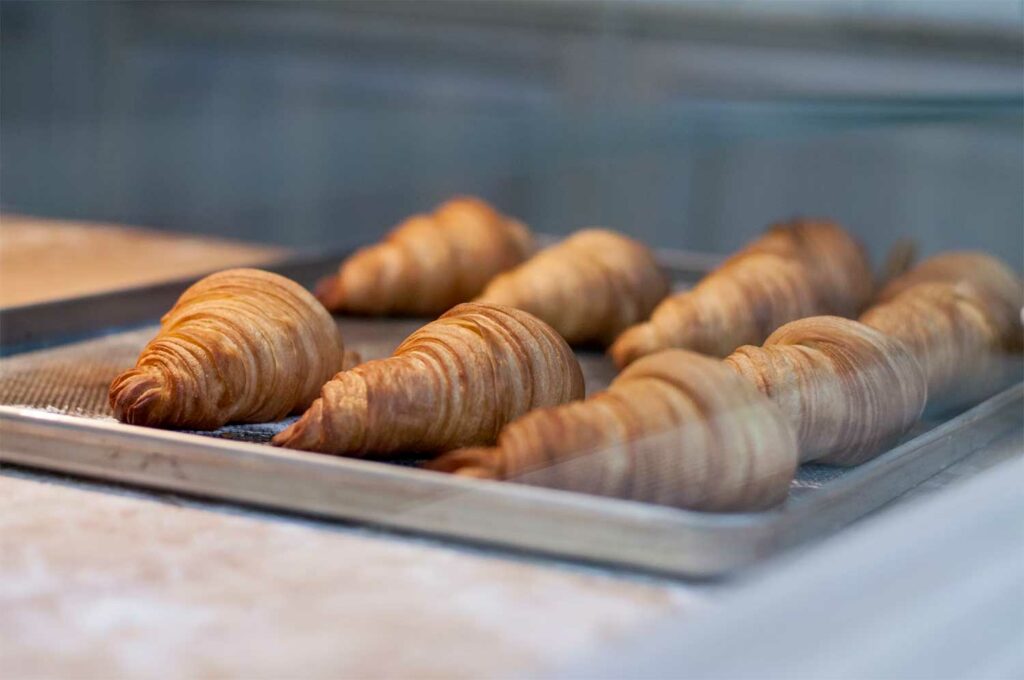
From the Boulangerie and the Pâtisserie
The baguette is more than bread. It is daily life measured in crust and crumb, now formally recognized for its artisanal know-how and cultural significance. Origins remain debated—technological changes in the 19th century and early-20th-century labor rules both played roles—but the result is an object of national consensus: light, crackling, best the day it is baked. The croissant tells another layered story: inspired by the Austrian kipferl and perfected in French viennoiserie, it balances fermentation with lamination to achieve that honeycombed interior. At the dessert counter, debates and legends abound. Tarte Tatin, an upside-down caramelized apple tart, owes fame to a blend of accident and smart restaurant storytelling. Crème brûlée’s ancestry is claimed by France, Catalonia, and England; the dessert we know—a vanilla custard capped with shattering caramel—now stands as a universal test of precision. Île flottante, a cloud of meringue on crème anglaise, requires a lighter touch but the same discipline: temperature control, texture, proportion. All speak to the craft that underpins French cuisine—and the pleasure of a well-made sweet.
Everyday Bistro Staples
If grand dishes mark celebrations, bistro cooking marks real life. Hachis Parmentier—seasoned minced meat under a gratin of mashed potatoes—takes its name from Antoine-Augustin Parmentier, the agronomist who championed the potato in the 18th century and helped make it a staple of the French diet. Steak tartare, now a brasserie emblem, evolved in the early 20th century from “steak à l’Américaine” into the hand-chopped meat seasoned to taste and crowned with a raw yolk that we recognize today. Steak haché frites—a ground-beef patty with fries—is the weeknight cousin, beloved for its simplicity. The croque-monsieur, a toasted ham-and-cheese sandwich often glossed with béchamel and grated cheese, embodies Parisian practicality; add a fried egg and it becomes a croque-madame. Along the coast, bulots—whelks from Normandy and the Channel—arrive chilled with garlicky mayonnaise, a maritime echo of Sunday platters. These staples demonstrate how regional specialties migrate to the national repertoire, becoming the shared language of lunch.
Learn by Doing: Where to Taste and Study
The surest way to understand a cuisine is to cook it. Across the country, you’ll find cooking classes in France that focus on market-driven menus, knife skills, and classic sauces, as well as workshops dedicated to bread and pastry. A good class will teach the techniques that make home cooking sing: how to brown without burning; how to deglaze and reduce; why a stew’s success depends on cutting pieces the same size; and how to choose the right potato for a purée. It will also decode labels that protect origin and quality—from PGI Bayonne ham to AOP Espelette pepper—and explain how to shop like a local, reading seasonality and trusting your senses. Pair classroom learning with table research: an estaminet in the North for carbonnade, a winstub in Alsace for choucroute, a creperie in Brittany for galettes, a bouchon for hearty Lyonnais plates, and a Basque table for piperade and peppers. This is how techniques become muscle memory—and how French gastronomy turns from idea into experience.
An Editorial Closing: A Living Atlas of Taste
France’s great strength is coherence amid diversity. The same principles—good shopping, careful technique, balance on the plate—govern foie gras and a croque-monsieur, a vineyard stew in Burgundy and seafood on a Normandy quay. Some dishes are centuries old; others, like tartiflette, are modern but rooted. Together they form a living atlas that you can navigate by appetite: north for beer and braises, east for sauerkraut and sausages, west for buckwheat and butter, south for sun and oil, southwest for peppers and geese. For cooks and travelers alike, the lesson is clear: learn the rules, honor the place, and season with judgment. Do that, and you will find that French cuisine still speaks with a confident, generous voice.
Cook in France is your independant source for food in France.